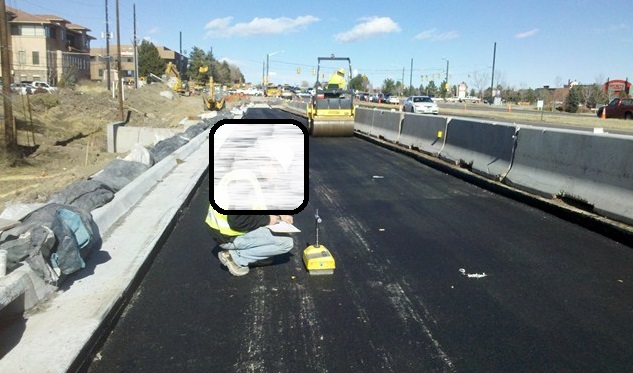DETERMINATION OF WATER CONTENT- DRY DENSITY
RELATION
OBJECTIVE
·
To determine the required amount of water
to be used when
compacting the soil in the field and the resulting degree
of denseness; this can be expected from compaction at
optimum moisture content.
APPARATUS
·
Cylindrical metal mould shall be either of 100mm
diameter and 1000cm3 volume or 150mm diameter and 2250cm3 volume
and shall confirm
to IS: 10074 – 1982.
·
Balance of capacity 500grams and sensitivity 0.01gram.
·
Balance of capacity
15Kg and sensitivity one gram.
·
Thermostatically controlled oven with capacity up to 250 0C.
·
Airtight containers.
·
Steel straight edge about 30cm in length and
having one beveled
edge.
·
4.75mm, 19mm and 37.5mm IS sieves confirming to IS 460 (Part
1).
·
Mixing tools
such as tray or pan, spoon, trowel and spatula
or suitable mechanical device for thoroughly mixing
the sample of soil with additions of water.
PROCEDURE
·
Take a representative sample
of air dried soil of about 5 kg (soil
not susceptible to crushing during compaction) or 3 kg from 15 kg sample (soil
susceptible to crushing
during compaction) passing
through 19mm IS sieve and mix thoroughly with a suitable amount
of water depending on the type
of soil, generally 4 to 6 percent
for sandy and gravelly
soils and plastic limit minus
8% to 10% for cohesive soils.
·
For soils
susceptible to crushing during
compaction take
different samples for
every determination and for soils not susceptible to crushing
during compaction use the
same sample for all the determinations.
·
Weigh the 1000cc capacity mould with base plate attached and without extension
to the nearest gram (m1).
·
Place the mould on a solid
base such as a concrete floor or plinth and compact the moist soil into the mould,
with the extension attached in 5 layers
of approximately equal mass,
each layer being
given 25 blows
with the 4.90kg hammer
dropped from a height
of 450mm above the soil.
·
Distribute the blows uniformly on each layer.
·
The amount of soil used shall
be sufficient to fill the mould
leaving not more
than about 6mm to be struck off when the extension is removed.
Compaction
of soil in to mould
·
Remove the extension and carefully level
the compacted soil
to the top of mould
by means of straight
edge.
·
Weigh the mould and the soil
to the nearest gram
(m2). Remove the compacted
soil from the mould and place on the mixing
tray.
·
Collect a representative sample
from the soil
in the tray
and keep in the oven
for 24 hours maintained at a temperature of 1050 to 1100 C to determine the moisture
content (W).
Compacting soil containing coarse material up to 37.50 mm size
·
Take representative sample
of material passing
through 37.50 mm IS sieve.
·
Compact the material in 2250 cm3 volume of mould
in five layers
each layer being given 55 blows with 4.90
kg rammer dropped
from a height of 450mm
above the soil.
·
The remaining procedure is same as described above
for 1000cc mould.
·
In all the above
cases make at least five determinations and the range of moisture content shall be such
that the optimum moisture content at which
the maximum dry density occurs
is within that range.
CALCULATIONS
·
Calculate the bulk density gw in g / cm3 of each compacted specimen from the equation,
gw
= (m2 – m1) / Vm
m1 = Weight of mould
with base plate.
m2 = Weight of mould with compacted soil. Vm = Volume
of mould in cm3.
·
Calculate
the dry density gd in g/cm3 from the equation,
gd
= gw / (1+W/100)
gw
= Bulk density
W = % of moisture
content
REPORT
·
Plot the values obtained
for each determination on a graph
representing moisture content on
x-axis and dry density
on y-axis.
·
Draw a smooth curve
through the resulting points and
determine the position of the
maximum in the curve.
·
Report the dry density
corresponding to the maximum
point to the nearest
0.01.
·
Report the
percentage corresponding to the maximum dry density
i.e. optimum moisture content to the nearest 0.2 %for values
below 5% and to the nearest
0.5% for values from
5 to 10% and to nearest whole
number for values
exceeding 10 %.
Read more:
Read how to Activate Autocad Civil 3 D 2018 and download X-force Cracks
Click here
Download free mobile data recovery software full registeredDrfone-for-android Click
Install Android 7.1.1 in laptop or PC Click here Or
Download Wondershare Filmora Video Editor 7.3.0.8 +
Read how to Activate Autocad Civil 3 D 2018 and download X-force Cracks Click here


